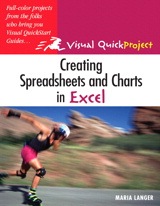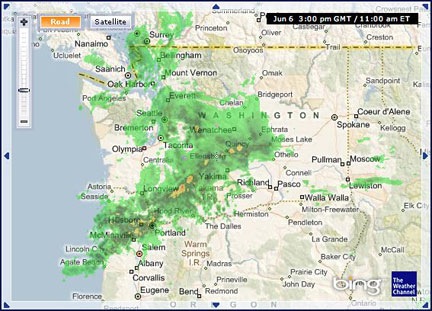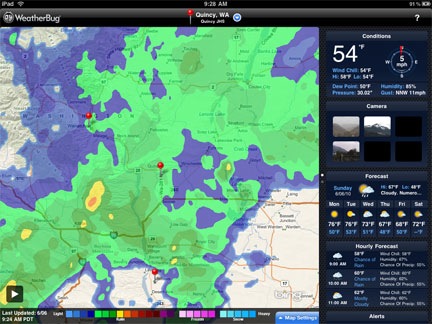Yes, I’m still alive and kicking.
In case regular readers are wondering whether I’ve fallen off the face of the earth, the answer is no, I haven’t.
My life has been non-stop craziness since the third week in September and I’ve simply been too busy to blog. That’s not to say I don’t have anything to blog about — I do! I just can’t find a 2-hour block of time to get some good content out of my head and into this blog. This status report will have to do for now.
Aerial Photo Flights at Lake Powell
The thing that started all this craziness was the aerial photo gig I had at Lake Powell. I was there for two weeks, but the last five days were the busiest. I did 14 individual aerial photo flights, each lasting between one and two hours.
I didn’t think it could ever happen, but by the end of the third day, I was actually getting tired of flying over that beautiful lake. It wasn’t until the last two photo shoots that I started really enjoying it again. I flew with a local photographer, Gary Ladd, who directed me to show him the lake and surrounding area in ways I’d never seen it. He brought the magic back. You can see some photos taken during the two flights by Rebecca Wilks, my client for those flights, at Skyline Images. I’m hoping Rebecca lets me share some of her work on the Flying M Air Web site.
That whole gig ended with a 2.2 hour flight from Lake Powell to Deer Valley. The first half of the flight was very pleasant, including the stop for breakfast at Marble Canyon Lodge. But once we got down off the Colorado Plateau southwest of Sedona, the heat and turbulence made the flight very unpleasant. My passenger, Rebecca, was likely on the verge of being ill for some of that time; I was certainly not feeling very good either. Landing at DVT was my return home after being away since May 15, ending four whole months on the road.
Two New Jobs
Back in July and August, when I had no writing work lined up, I started putting irons on the fire. The economy might be scary for people with jobs, but it’s terrifying for freelancers when there’s nothing on the calendar. I started discussions with two different publishers, feeling I had about a 50-50 chance of getting either job.
The good news: I got them both.
The bad news: They had the same deadline.
I worked my butt off for my first full week home, trying hard to deliver content for both of them. I realized that they’d either think I was lazy or incompetent. This was not a good thing, since one of the contracts was a brand new relationship with a publisher I hope to do more work for.
I confessed to both of my editors. I was surprised — and very happy — about how understanding they were.
Now I’m at Lynda.com‘s offices in Ventura, finishing up one of those projects. On Sunday, when I return, I’ll be back at my desk, cranking out new chapters for the other project, a brand new book. I expect to be working on it daily for the next three weeks.
Helicopter Rides
I do helicopter rides every year at the Congress Days event in Congress, AZ. It’s a very small event, but it gathers quite a local crowd. I make the rides cheap enough for anyone to afford them. This year, they were $25 per person, down from $30 per person last year.
This year, the rides gig fell on October 2, which was this past Saturday. Despite my crazy busy schedule, I showed up as planned and did a bunch of rides in 95°F weather. This particular event is extremely blog-worthy due to the challenging flying conditions and I definitely will be blogging about it when I get some time. I just need to assemble some more visual aids. It’s a good lesson in high density altitude flying.
Phoenix to Santa Barbara by Way of Bakersfield
My flight to Santa Barbara (to go to Ventura this week) was a bit of an adventure. The marine layer was in at midday and the glide slope at Santa Barbara was broken. On the attempted landing, the pilot was able to get down to 500 feet (the decision height) and not see the runway. I got a glimpse of the ground through the clouds before he hit the throttles and we ascended back through the clouds.
There was no second try. He flew us to Bakersfield where we were let off the plane in a terminal with a closed Subway restaurant. When the United Airlines flight to Santa Barbara also landed there, they hired a bus to take us to Santa Barbara.
I hate buses.
When a fellow passenger rented a mini-van for a one-way drive to Santa Barbara, I was one of five other people who joined her. The $130 rental plus $20 fuel purchase came out to $25/person and I’m certain that we beat the bus by at least two hours.
So instead of arriving at my hotel by 2 PM, I rolled up after 7 PM after an adventure with five strangers.
That’s worth a blog post on its own, but I’m allowing the memory to fade and don’t want to bring it back by writing about it.
Ventura and Beyond
So here I am in my hotel in Oxnard, CA, right near the border of Ventura. It’s 6:40 AM. At 7:30 AM, I’ll be in a soundproof booth, recording my words of wisdom and mouse clicks for another new course. I’m not sure if I can talk about it yet, but you’ll hear about it soon enough. I’m happy to be here, despite the clouds and rain.
Once I get home, I’ll get back on my regular schedule of blogging. I need to blog. If I don’t write here at least four or five times a week, I get a little crazy. So just have some patience and I’ll do the best I can.

 You see, although I’ve got 70+ books under my belt, the vast majority of those titles are revisions. Two of them have been revised at least 10 times. In fact, on consulting
You see, although I’ve got 70+ books under my belt, the vast majority of those titles are revisions. Two of them have been revised at least 10 times. In fact, on consulting  The National Weather Service at
The National Weather Service at  When rain is in the area or on the way, I use the
When rain is in the area or on the way, I use the  When I’m out and about and have access to the Internet, I use WeatherBug on my iPad to see weather information, including a radar graphic, forecast summary, and hour-by-hour forecast. I can also use its Webcam images to help judge visibility in the event that I need to cross the Cascades to get to Seattle. (Which I don’t usually do during the season.) WeatherBug is also available for mobile phones; I really do need to get it back on my BlackBerry.
When I’m out and about and have access to the Internet, I use WeatherBug on my iPad to see weather information, including a radar graphic, forecast summary, and hour-by-hour forecast. I can also use its Webcam images to help judge visibility in the event that I need to cross the Cascades to get to Seattle. (Which I don’t usually do during the season.) WeatherBug is also available for mobile phones; I really do need to get it back on my BlackBerry. The helicopter is a quarter mile away and already fueled and preflighted. All I have to do is pull off the blade covers. I can be airborne within 10 minutes of my client’s call. The orchard is a 4-minute flight from here. So I’d much rather sit in my nice warm RV, watching the weather on radar, than sitting out in my truck by the helicopter, blind without most of my weather sources.
The helicopter is a quarter mile away and already fueled and preflighted. All I have to do is pull off the blade covers. I can be airborne within 10 minutes of my client’s call. The orchard is a 4-minute flight from here. So I’d much rather sit in my nice warm RV, watching the weather on radar, than sitting out in my truck by the helicopter, blind without most of my weather sources. So we did a quick circuit around Gunsite Butte and Alstrom Point, then hustled up the lake toward Rainbow Bridge. Although the forecast had called for 50% overcast and morning winds up to 10 MPH, the sun was bright but filtered and the wind was not an issue at all. Flying toward the sun, the views weren’t very good, but glances to the left or right as I turned showed stunning morning views of the lake and red rock cliffs. My client didn’t provide much instruction, so I didn’t waste his time by being a tour guide. (Note that this photo and all the others that appear in this post were taken at other times; I can’t take pictures while I’m flying with clients aboard.)
So we did a quick circuit around Gunsite Butte and Alstrom Point, then hustled up the lake toward Rainbow Bridge. Although the forecast had called for 50% overcast and morning winds up to 10 MPH, the sun was bright but filtered and the wind was not an issue at all. Flying toward the sun, the views weren’t very good, but glances to the left or right as I turned showed stunning morning views of the lake and red rock cliffs. My client didn’t provide much instruction, so I didn’t waste his time by being a tour guide. (Note that this photo and all the others that appear in this post were taken at other times; I can’t take pictures while I’m flying with clients aboard.) We had a bit of a tense time when my client asked me to fly lower near Rainbow Bridge. The problem is, Rainbow Bridge is at the bottom of a narrow canyon. I know that I can get down to 5,000 feet MSL safely, so that’s what I always shoot for. He wanted me lower. That would bring me very close to a canyon wall. When I pointed that out, he backed down. I think he may have been spooked. But I gave him a good look at the bridge and was satisfied to hear his camera clicking right through his microphone.
We had a bit of a tense time when my client asked me to fly lower near Rainbow Bridge. The problem is, Rainbow Bridge is at the bottom of a narrow canyon. I know that I can get down to 5,000 feet MSL safely, so that’s what I always shoot for. He wanted me lower. That would bring me very close to a canyon wall. When I pointed that out, he backed down. I think he may have been spooked. But I gave him a good look at the bridge and was satisfied to hear his camera clicking right through his microphone. He asked me to take him to Horseshoe Bend and I headed out that way. I purposely swung past the Glen Canyon Dam, putting it on his side of the aircraft so he could take photos. I heard his camera snap. Then I climbed — Horseshoe Bend is best seen from at least 6,000 feet — and headed downriver. A few minutes later, I pointed out Horseshoe Bend and began making a climbing circle to the left around it. I was about 270° into it when he told me we were done.
He asked me to take him to Horseshoe Bend and I headed out that way. I purposely swung past the Glen Canyon Dam, putting it on his side of the aircraft so he could take photos. I heard his camera snap. Then I climbed — Horseshoe Bend is best seen from at least 6,000 feet — and headed downriver. A few minutes later, I pointed out Horseshoe Bend and began making a climbing circle to the left around it. I was about 270° into it when he told me we were done.